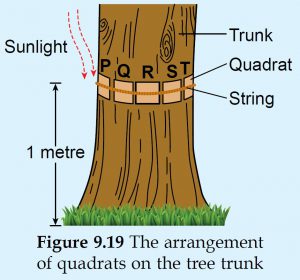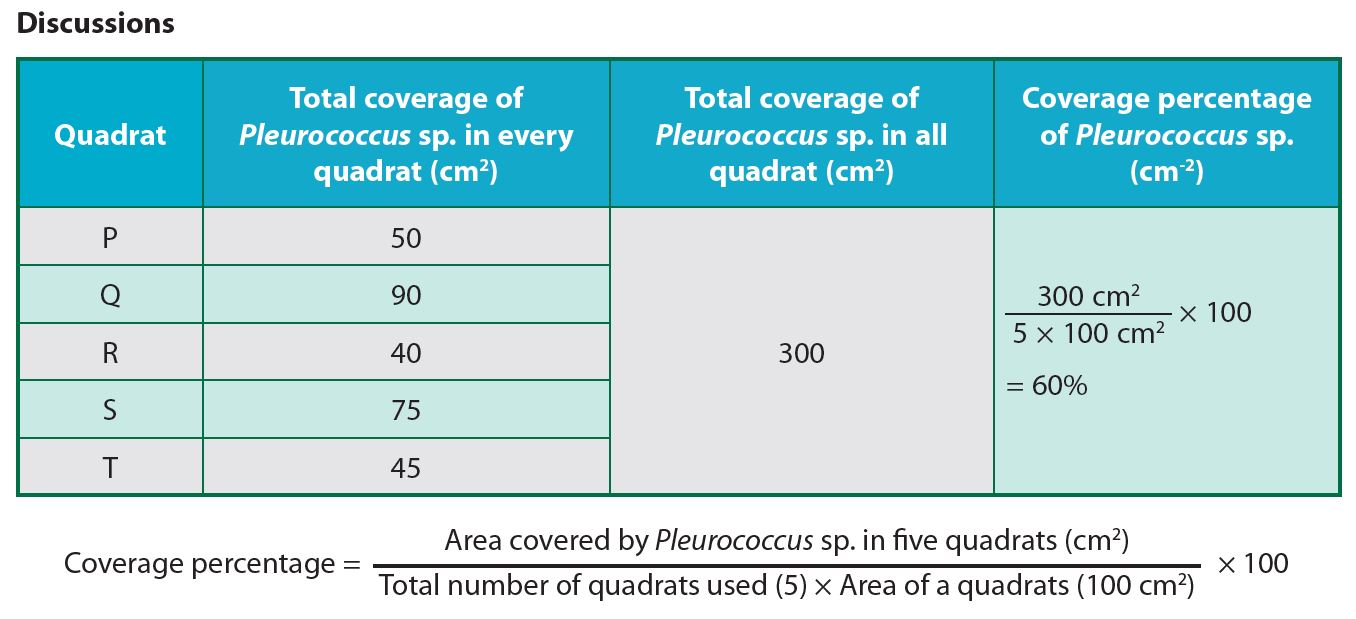Pleurococcus sp. is a type of green algae growing on areas that are protected from the scorching sunlight to form a slimy layer on places such as tree barks, stones and moist soil. This algae can reproduce very fast through vegetative cell division by binary fission. Pleurococcus sp. is a sphere-shaped unicellular organism which can exist individually or in groups. It has thick cell walls to prevent excessive water loss. Every cell is abundant with chloroplasts for photosynthesis.
Aim
To carry out a field study to observe the effects of abiotic components on the population of an organism.
Apparatus
Five quadrats (10 cm × 10 cm) which are made from transparent plastic, a marker pen, a roll of string and a metre ruler
Procedure
1. Choose a tree which has an uneven growth of Pleurococcus sp. at the lower part of the tree trunk.
2. Identify the side of the tree which receives the most sunlight.
3. Tie a string around the tree trunk at an estimated distance of one metre from the ground.
4. Draw grids measuring 1 cm × 1 cm on each of the transparent quadrats.
5. Put the quadrats at the lower part of the string at different aspects, P, Q, R, S and T as seen in Figure 9.19.

6. By using a marker pen, shade all parts where the growth of Pleurococcus sp. can be seen in the transparent quadrats.
7. Count the number of squares which contain Pleurococcus sp. in the quadrats.
(Note: Only count squares which are half-covered or more than half-covered)
8. The coverage percentage for all quadrats is estimated by using the formula:

Discussion
1. Which quadrat receives sunlight
(a) the most?
(b) the least?
2. Which quadrat has the coverage percentage of Pleurococcus sp. that is
(a) the highest?
(b) the lowest?
3. Explain the influence of sunlight towards the growth of Pleurococcus sp.
Answer:

Discussions
1. (a) T
(b) S
2. (a) Q
(b) R
3.
The population distribution of Pleurococcus sp. is higher in the area of moderate light and temperature distributions because the rate of photosynthesis is the highest.
When the light intensity and temperature are high, the outer layer of tree trunk becomes hot and hydration of Pleurococcus sp. cells happens. The growth rate of Pleurococcus sp. becomes slower.